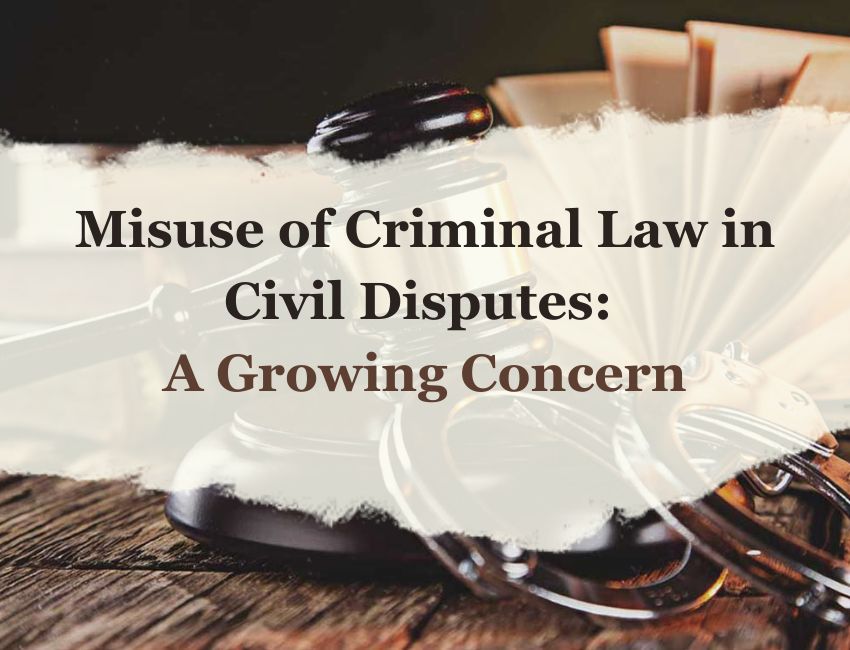A.B. Srivastava, J.@mdashThis is landlord''s writ petition against the rejection of their applications u/s 21(1) of U.P. Act 13 of 1972 by the appellate court for releasing a building in the tenancy of the Respondent No. 3. The Petitioners are owners of a double storeyed building in Mohalla Mahabirganj Aligarh, the ground floor whereof is in the tenancy of the Respondent No. 3 who has been using the same for business. The first floor was in the possession of the Petitioner but having become dilapidated the roof thereof fell. The entire building including the ground floor, it is alleged, is dilapidated requiring demolition and reconstruction. The Petitioners also alleged that they have got the plan prepared and have got the means to undertake the new construction. It was further alleged that ancestral house of the Petitioner is situated in Mohalla Chhipeti, Dal Mandi, Aligarh. In mutual partition of the said building a room, two kothas, a latrine on the ground floor, one room, a kothari, kitchen, lavatory on the first floor, came to the share of Onkar Prasad, the predecessor-in title of the Petitioners Nos. 6 to 13, whereas the remaining portion of the residential house went to the share of Hoti Lai, the predecessor In-title of the Petitioner Nos. 1 to 5. In the ground floor portion the branch of Petitioners Nos. 6 to 13 has business whereas their entire family consisting of six persons live in the scantly accommodation of the first floor which not sufficient for them as well as for the married daughters and guests frequently coming and staying with them. They thus required the ground floor accommodation in the tenancy of the Respondent to shift their business from the ground floor of the Chhipeti house and utilise the said ground floor portion for the purpose of their residence.
2. The application was opposed by the Respondent with allegation that it is not bona fide, the branch of Hoti Lai is living in a house in Sarai Nawab and not in the house in Chhipeti. The accommodation in possession of the branch of Onkar Prasad is sufficient for their needs. The first floor portion of the building in question fell on account of want of repairs. The ground floor is not dilapidated and does not require reconstruction. The shop of the Petitioner in the building in question is more than 20 years rid and he has earned goodwill and will be put to hardship if he is evicted, compliance of Rule 17 of Act 13 of 1972 has also not been made.
3. The learned prescribed authority held that the building in question is dilapidated, compliance of Rule 17 has been made, and the accommodation at the disposal of the Petitioners of the branch of Onkar Prasad is inadequate for their needs. He accordingly allowed the release application. The appellate court, however, held that the building though out of repairs is not dilapidated, the branch of Hoti Lai live,s in Mohalla Sarai Nawab whereas the branch of Onkar Prasad lives in the entire house in Mohalla Chhipeti, and does not bona fide need the accommodation in the tenancy of the Respondent No. 3. He accordingly allowed the appeal and dismissed the release application.
4. Both parties'' learned Counsel have been heard, the affidavits including the supplementary affidavit exchanged between them, have been gone through.
5. As stated above, In this case the release was allowed by the learned prescribed authority on twin grounds of the shop in question being dilapidated requiring re-construction, and the bona fide need of the Petitioners Nos. 6 to 13 of the branch of Onkar Prasad. The appellate Court, however, negative both the points, and reversed the order of the prescribed authority.
6. Taking up first the question of release u/s 21(1) the contention on behalf of the Petitioners is that there was ample material on record to show that the building was dilapidated and the appellate court was unjustified in reversing the finding of the prescribed authority, its view that a building can be said to be dilapidated only if its fall is imminent, is unsustainable in law. The contention on behalf of the other side is that the mere fact of the first floor having fallen and the ground floor requiring repairs, does not mean that the building is dilapidated within the meaning of Section 21(1) .
7. On record, however, there was a Commissioner''s report, copy of which has been filed as Annexure ''F'' which clearly goes to show that the shop on the ground floor had also badly shattered, Its walls had cracked and plasters had given way. The learned appellate court rejected the Commissioner''s report, despite itself holding that the building is out of repairs, is made of Kakaiya bricks and its roof is supported by wooden planks, some of which are about half a century old and some of which have also bent due to weight of the roof. In view of the above factual state of the building, this view of the learned appellate court cannot be sustained. The roof of the upper floor having already fallen, the walls having cracked at places, the plaster having given way and some of the supporting wooden planks having bent, the only conclusion possible is that the building has become dilapidated and does require demolition and reconstruction. The contention that the building not having fallen during the past over a decade, there will arise a presumption of it not being dilapidated, is not correct because as already said above, the law does not require that a building should be in the imminent danger of falling, to be treated as a dilapidated one requiring re-construction. This view is fortified also by the principle laid down in this regard in Smf. Shanti Devi v. 1st Additional District Judge, Kanpur and Ors. 1983 (1) ARC 20. In fact waiting for a building to get on the verge of collapse and then to allow its demolition the re-construction, will be putting human life itself in Jeopardy and would be a negation of basic principles of safety and security, underlying the provisions of Section 21(1) of the Act.
8. In this case as far as compliance of Rule 17 framed under the Act is concerned, there was clear averment and assertion on behalf of the Petitioners, not rebutted by any satisfactory evidence on behalf of the contesting Respondents. The release thus deserves to be allowed on this ground alone, irrespective of the other consideration relevant to Section 21(1) of the Act.
9. Now coming to the question of bona fide need of the Petitioners Nos. 6 to 13 to occupy the premises in question for the purpose of their business, and thereby to provide them the basic requirement of a proper residential accommodation in their house situated in Mohalla Chhipeti, also it would be found that the conclusions arrived at by the learned appellate court are against the weight of evidence on record. Consistent evidence was led on behalf of the Petitioners to show that the residential house was partitioned between the two branches of Hoti Lai (represented by Petitioner Nos. 1 to 5) and Onkar Prasad (represented by Petitioner Nos. 6 to 13) in which the branch of Petitioners No. 6 to 13 got in all 3 rooms, 2 kothas, besides kitchen and lavatory, etc. on the ground and the first floors. In a portion of the first floor they are having also their business. Under these circumstances, whatever, accommodation is left for their residential purposes, is quite inadequate for a family consisting of 6 persons. They thus bonafide require to shift their business from the ground floor of the said house to the accommodation in question after reconstructing the same, and use the portion so becoming available in the house In Mohalla Chhipeti, to augment their residential accommodation. The need for such accommodation cannot by any standard, be said to be imaginary or fanciful.
10. The plea of the contesting Respondents that the entire house in Mohalla Chhipeti should be taken to be in the share and occupation of Petitioner Nos. 6 to 13 because in the release application the sons of Hoti Lai are shown to be residing in mohalla Sarai Nawab, is also not tenable, because there is no evidence to show that the branch of Hoti Lai has surrendered or relinquished its share in the house in Chhipeti in favour of the branch of Onkar Prasad. Consequently, on these facts, in addition to the ground u/s 21(1) the Petitioners are also entitled to seek release of the shop in question on the ground of need of personal occupation u/s 21(1) of the Act.
11. The contention raised on behalf of the Respondent No. 3 against the maintainability of the release application on the ground of non-impleadment of the heirs of his father Luxmi Narain, also has no legs to stand, it being in evidence that along with Luxmi Narain, the Respondent No. 3 was also a joint tenant of the premises in question. Consequently, on the death of Luxmi Narain, the Respondent Nos. 3 as the surviving tenant could be proceeded against u/s 21 of the Act without the necessity of the heirs of Luxmi Narain being impleaded. The principles laid down in 1985 SCC 291 and 1994 (2) ARC 98 and 184, thus do not come to the aid of the Petitioners.
12. The Respondent in his supplementary counter affidavit pleaded about the Petitioners having acquired a number of accommodations during the pendency of this writ petition, and has contended that this defeats the claim of bona Jide need. However, It has specifically been pleaded on behalf of the Petitioner Nos. 6 to 13 in reply that these acquisitions have notion to do with their branch. The Respondent having produced no material to show that these are acquisitions of the branch of Onkar Prasad, he cannot defeat the claim of the Petitioners on this ground. A half hearted attempt was also made by the Respondent to offer to purchase this premises on the market price, to which the Petitioners agreed quoting the price to be Rs. 12 lacs, but there being no further response consequent to that from the side of Respondent, the said offer does not remain relevant in the context of the release.
13. The facts and the circumstances discussed above, thus go to clearly establish that the learned Additional District Judge committed a manifest error of law in reversing the judgment and order of the prescribed authority and rejecting the release application of the Petitioner landlords. The impugned order thus deserves to be quashed and the order of release restored.
14. The writ petition is accordingly, allowed. The impugned order dated 29.7.1991 of the learned Additional District Judge is quashed. The release application of the Petitioners stands allowed. The Respondent No. 3 is however allowed 4 months'' time to vacate the premises in question and for the purpose, furnish an undertaking before the prescribed authority, within three weeks. No order is made as to costs.

